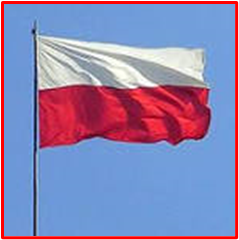Majówka, a trifecta of Polish Celebrations
Majówka (Mai-oof-ka) is an annual celebration in Poland commemorating three important dates…which are the first three days of May.
May 1st in Poland is Labor Day (Święto Pracy), and was established as a public holiday in 1950 and has been a day off from work since then. Historically, rallies and demonstrations for labor began as a leftist movement in Paris in 1889. The appeal of the worldwide labor movement found fertile ground throughout Poland, in all three partitions. This day had important symbolism for the communists. In almost all cities throughout Poland, May Day parades were obligatory, in which students, employees of factories, offices, and other institutions had to participate. Today, like in America, it appropriately recognizes the labor contributions of all citizens and is mainly used for relaxation and recreation during a long extended weekend.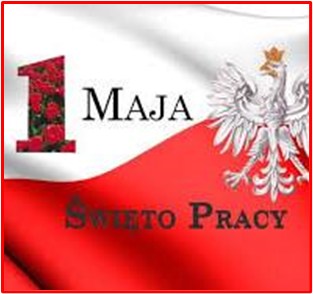
May 2nd is Flag Day (Święto Flagi Narodowej). It is not a national holiday but was established in 2004 as an opportunity for Poles worldwide to reflect on heritage and history and is intended to popularize knowledge and respect for Polish national symbols, including the flag, the coat of arms, colors, and the national anthem.
The Polish coat of arms is an image of a white eagle with its wings spread out, with a crown, and golden beak and claws on a red field.
The national colors are white and red. White represents peace and hope for all the people of Poland, and red represents the struggle for freedom over the centuries.
The national anthem is “Poland is Not Yet Lost”, also known as Dąbrowski's Mazurka. (The anthem also has its own day of celebration, February 26, so expect to see an article dedicated to it at a later date.) 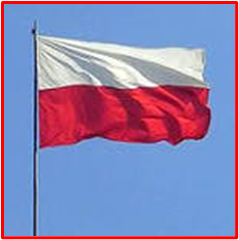
May 2nd is increasingly cherished. Flags fly on houses and apartment blocks. Various festivities and artistic performances take place. Although May 2nd is not an official “day off” like May 1 and May 3, it is treated as such by the Poles.
May 2nd also marks a celebration for the Day of Polish Diaspora, established in 2002, which recognizes the achievements and contributions of the approximate 20 million Poles, or people of Polish descent, living abroad.
On May 3rd, (Święto Konstytucji 3 Maja), Poland’s Constitution of May 3, 1791, a national holiday, is celebrated. Poland’s Constitution was the second-oldest written constitution in the world, following the Constitution of the United States. The Constitution extended full citizenship rights to townspeople and full protection of the law for peasants. The belief was that the constitution would strengthen and rejuvenate the struggling and threatened nation.
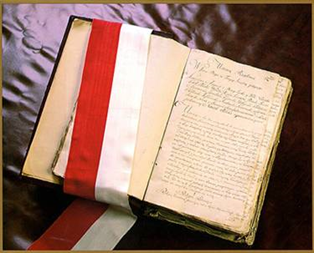 Although short-lived, the Constitution was in effect for only 19 months because it was threatening to Poland’s autocratic neighbors, it would have a lasting effect, becoming the light of hope that flamed in the hearts of Poles during, and after, Poland’s three partitions and its eventual reemergence as a sovereign nation in 1918.
Although short-lived, the Constitution was in effect for only 19 months because it was threatening to Poland’s autocratic neighbors, it would have a lasting effect, becoming the light of hope that flamed in the hearts of Poles during, and after, Poland’s three partitions and its eventual reemergence as a sovereign nation in 1918.
In many ways, the Constitution of May 3 resembles the Constitution of the United States with a series of protections and views that would acknowledge and confirm religious liberties, protect its citizens, detail a separation of the three branches of government, and provide for the defense of the country, among other provisions.
Since 1920, May 3rd has also officially become a nationwide religious holiday, because on this day the Catholic Church celebrates the feast of the Blessed Virgin Mary, Queen of Poland.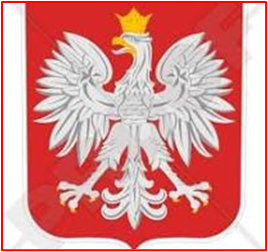
Sweden had launched an invasion of Poland in 1655. Warsaw and Kraków had fallen. The Swedes had laid siege to the Pauline Monastery at Jasna Góra in Częstochowa where the famed painting was preserved, but it was there that the monks, nobility, and citizens posed a 40-day 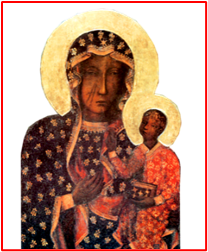 resistance that eventually defeated the Swedes. Poland would not be Protestantized. That turning point was recognized as providential, leading to King John II Casimir’s vow proclaiming Mary as Queen of Poland in 1656.
resistance that eventually defeated the Swedes. Poland would not be Protestantized. That turning point was recognized as providential, leading to King John II Casimir’s vow proclaiming Mary as Queen of Poland in 1656.
